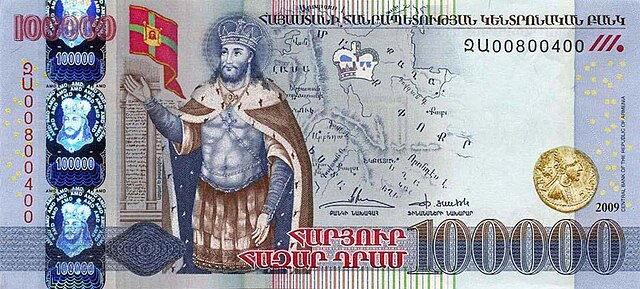The economy of Armenia grew by 12.6% in 2022, according to the country's Statistical Committee and the International Monetary Fund. Total output amounted to 8.5 trillion Armenian drams, or $19.5 billion. At the same time, Armenia's foreign trade turnover significantly accelerated in growth from 17.7% in 2021 to 68.6% in 2022.
GDP contracted sharply in 2020 by 7.2%, mainly due to the COVID-19 recession and the war against Azerbaijan. In contrast it grew by 7.6 per cent in 2019, the largest recorded growth since 2007, while between 2012 and 2018 GDP grew 40.7%, and key banking indicators like assets and credit exposures almost doubled.
Yerevan, the economic centre of Armenia
100 million rubles banknote
Cornelian cherries, figs, pears, peaches and apples sold at a market in Yerevan are among a few of Armenian agricultural products
Armenia's largest mine, the Kajaran copper-molybdenum open-pit mine in southern Armenia
The Armenian dram is the currency of Armenia. It was historically subdivided into 100 luma. The Central Bank of Armenia is responsible for issuance and circulation of dram banknotes and coins, as well as implementing the monetary policy of Armenia.
֏100,000 banknote, the highest denominated banknote in circulation.
The dram sign






